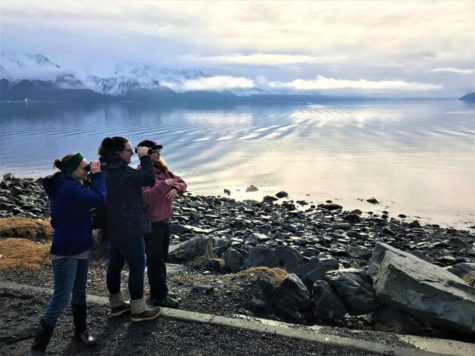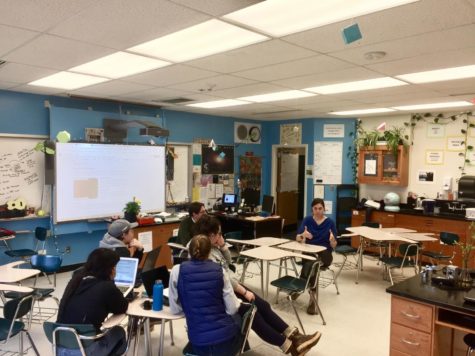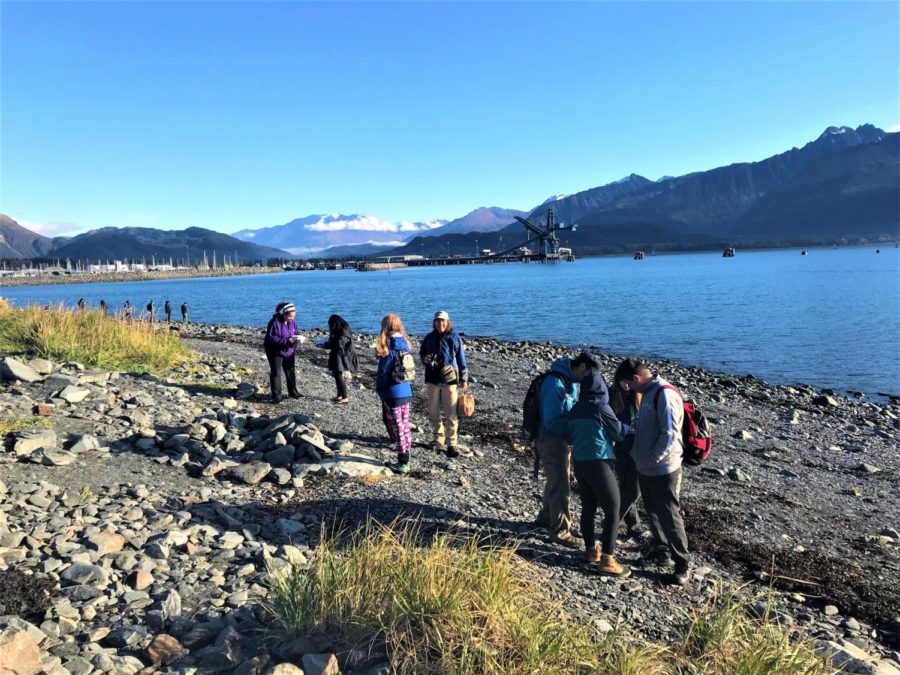Marine Biology Soaring New Heights
May 1, 2019
This year’s Seward High School’s Marine Biology class decided to do a collaborative project with the Alaska SeaLife Center (ASLC). They collected data on seabirds from the shore and compared it to data the ASLC has from the boat. Beginning in September, they have gone out once a week counting the seabirds, keeping an up-to-date collection of data, and this semester, they are writing papers on the project.
First semester, along with participating in the National Ocean Science Bowl, the class walked the waterfront every Wednesday. The waterfront was split into four segments starting at the break water and ending at the SeaLife Center. The class counted all the birds and mammals they saw from the shore to 100 meters out.
 They split into groups of three or more students, and each one had a specific job: scribe, GPS recorder, and birders. While everyone tries to identify the birds, the birders have binoculars to gain a closer look. The GPS recorder uses the way-point to find the latitude and longitude where the bird was spotted, and the scribe records all the information.
They split into groups of three or more students, and each one had a specific job: scribe, GPS recorder, and birders. While everyone tries to identify the birds, the birders have binoculars to gain a closer look. The GPS recorder uses the way-point to find the latitude and longitude where the bird was spotted, and the scribe records all the information.
They input all the data into a Google excel sheet and share that with the ASLC, who performed a similar survey. They took a boat 100 meters out from shore, and following the shore line, they recorded birds 100 meters on either side of the boat.
This semester, the class is still going out once a week and recording data, but is also writing papers on all the entirety of the information collected. Each student is writing about a different topic. Some of the topics include “Are sea ducks counts similar between land and sea based survey data?” “How does the tide affect the number of Barrows Golden Eye present?” and “Can water temperature changes affect the abundance of Barrows Golden Eye?”
The Marine Biology class and the ASLC not only want to keep The Seabird Project going in the school, but extend it to the community. Any community members interested in counting birds once a week will allow this project to continue throughout the summer.
 The data will help the ASLC understand when the different seabirds populations migrate, if the tide affects the migration, and even the condition of the ecosystem.
The data will help the ASLC understand when the different seabirds populations migrate, if the tide affects the migration, and even the condition of the ecosystem.






Sophia • May 6, 2019 at 9:42 am
This article is so well written!
Daisy • May 6, 2019 at 9:39 am
This seems like such a fun class!
lucas • May 6, 2019 at 9:36 am
dope like dish soap